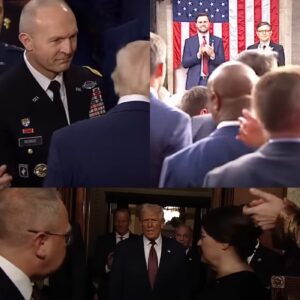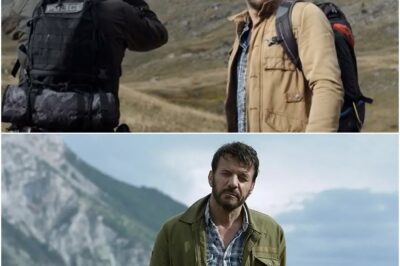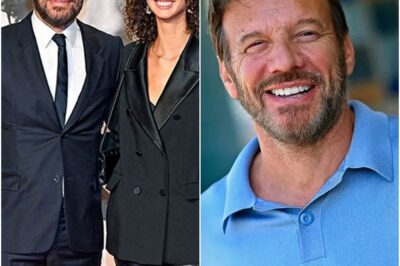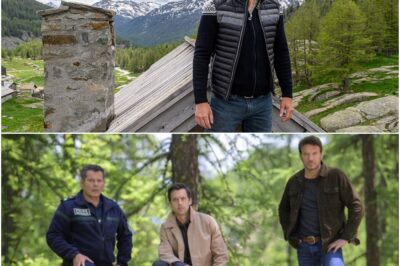Announcing the President: A Night of Political Significance

The anticipation in the chamber was palpable. The room was filled with some of the nation’s most powerful figures—lawmakers, military officials, Supreme Court justices, and dignitaries—each awaiting the arrival of the President of the United States.
The moment finally arrived. As the President made his way down the center aisle, the crowd erupted into applause. The scene was one of reverence and excitement, a hallmark of American political tradition. Members of both parties leaned in to shake his hand, offering greetings regardless of political affiliation. For some, this was a once-in-a-lifetime opportunity to be acknowledged by the most powerful figure in the government.
As he proceeded, he paused to exchange handshakes with key figures, including Chief Justice John Roberts and Justice Brett Kavanaugh, before passing the remaining members of the Supreme Court. This was more than just a ceremonial greeting—it was a significant moment, as the President would soon face critical legal challenges before the nation’s highest court. The topics ranged from his authority over foreign aid to the extent of his power in dismissing executive branch officials. The decisions ahead would shape the future of governance in the United States.
Moving forward, the President acknowledged the military leadership present, shaking hands with generals seated in the front row. The significance of his interaction with them was not lost on the crowd—he was preparing to nominate a new Chairman of the Joint Chiefs of Staff, a move that would have lasting implications for national security.
As he progressed, he approached the podium, exchanging greetings with the Vice President and the Speaker of the House. Their handshake symbolized a brief moment of unity in an otherwise deeply divided political landscape. The gravity of the occasion was clear—this was his first joint address of the term, his second overall, and his fifth as President of the United States.
The applause intensified, and the chamber filled with cheers as he stood before the assembled government. The energy in the room was electric, a mixture of admiration, expectation, and political theater.
Finally, as the clapping subsided, he took a moment to appreciate the reception. With a confident nod and a small smile, he stepped up to the microphone. His voice echoed through the chamber as he began his address:
“Thank you. Thank you very much.”
And with that, the nation turned its attention to the words of the President—words that would shape policy, define leadership, and set the tone for the years to come.
News
Alex Hugo : un départ inattendu pour Samuel le Bihan après un changement radical sur France 3 -TB
Capture France 2 A l’aube d’une fin historique, actée par Lionnel Astier, Samuel Le Bilan prendra un nouveau départ…
Samuel Le Bihan : l’homme à la force tranquille -TB
À 57 ans, Samuel Le Bihan a connu le haut de l’affiche avant d’être délaissé par le monde du cinéma….
Alex Hugo : quand seront diffusés les prochains épisodes inédits ? -TB
La popularité d’Alex Hugo, la fiction policière portée par Samuel Le Bihan, ne se se dément pas. Bonne nouvelle pour…
Entretien exclusif avec Samuel Le Bihan pour le retour d’Alex Hugo sur France 3 -TB
La semaine dernière, nous vous partagions la première partie de notre entretien avec Samuel Le Bihan pour la reprise d’Alex Hugo sur France…
Sophie Marceau (57 ans) balance sur sa sexualité : “C’est compliqué… -TB
Sophie Marceau, actrice emblématique du cinéma français, n’est jamais avare en confidences en interview. Elle parle aussi régulièrement de son…
«Star Academy»: retrouvailles en musique avec Nolwenn Leroy et Emma Daumas dans l’émission «Chemins de traverse» (vidéo) -TB
Plus de 20 ans après leur participation au télécrochet, les deux chanteuses ont repris « Évidemment » de France Gall….
End of content
No more pages to load












